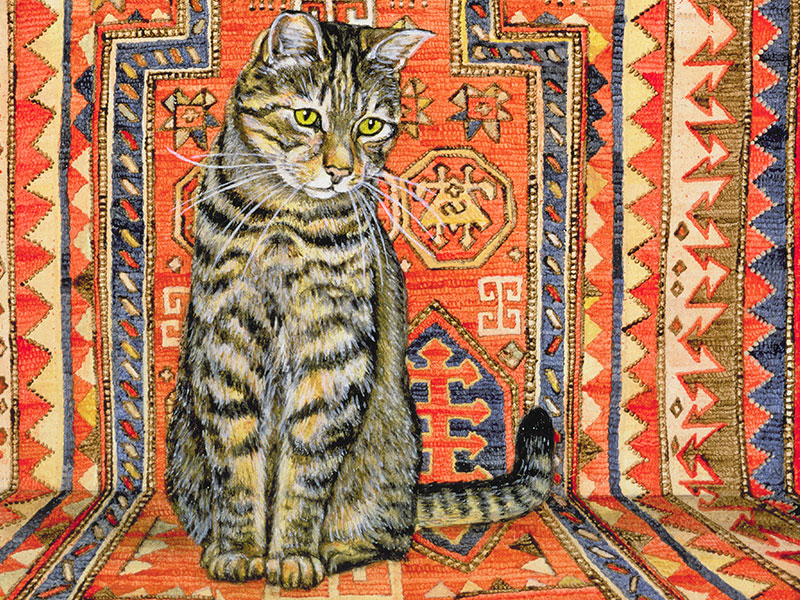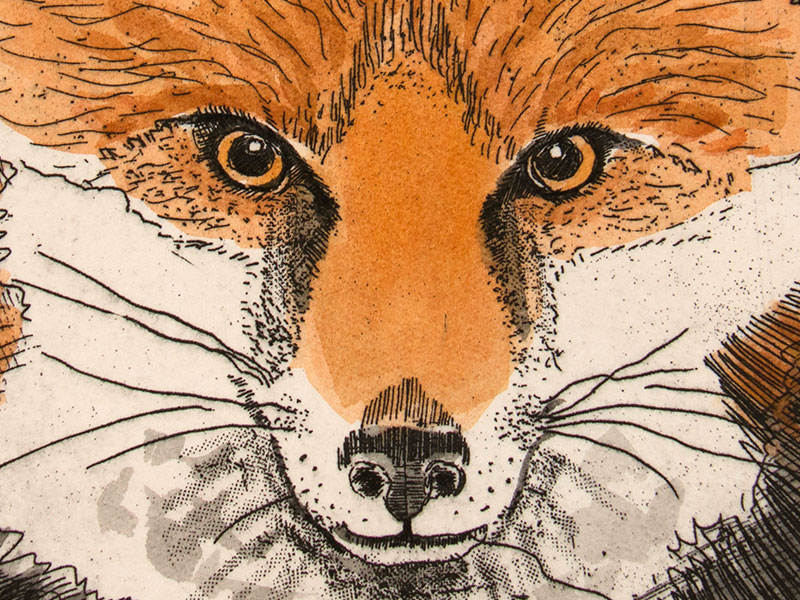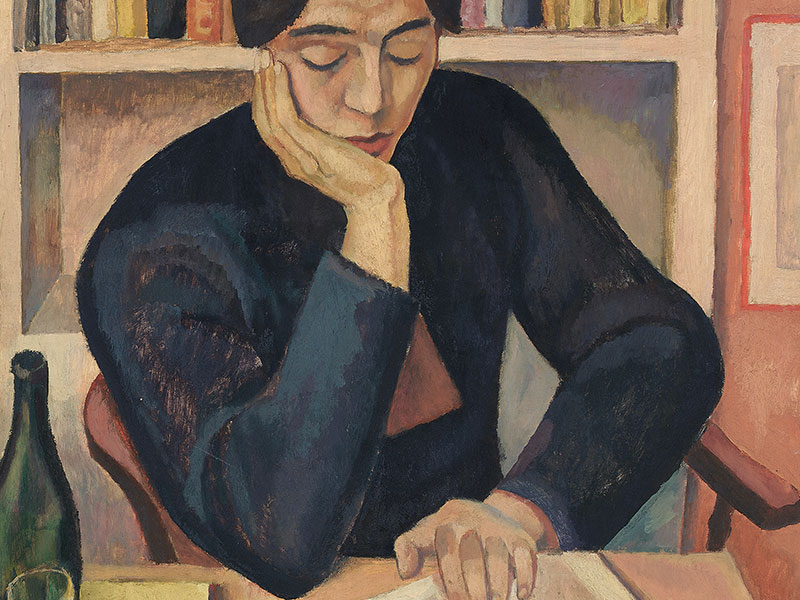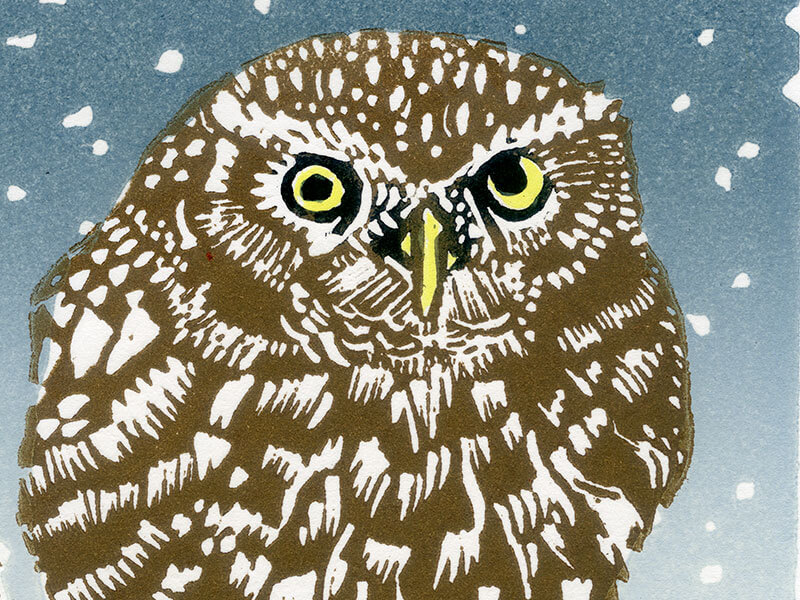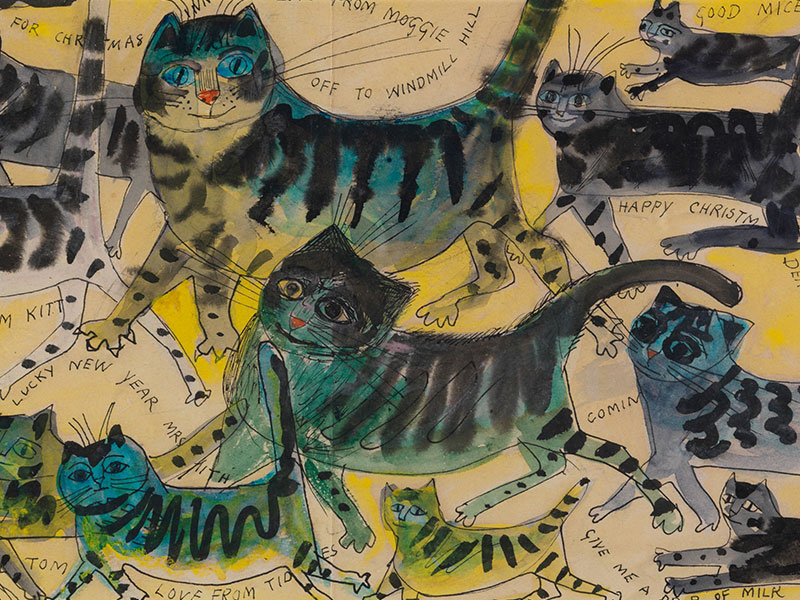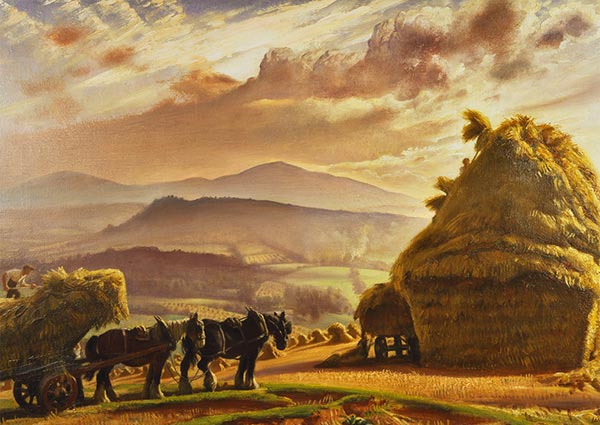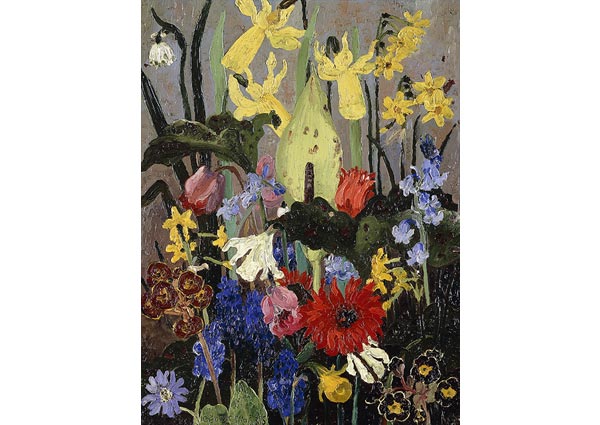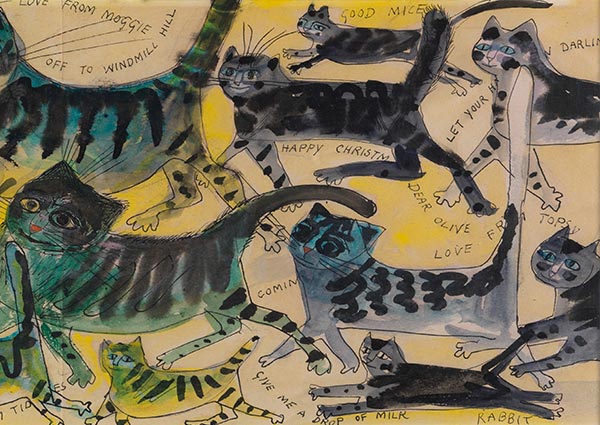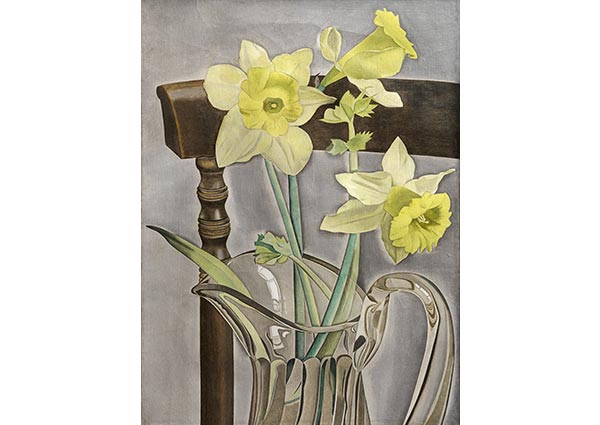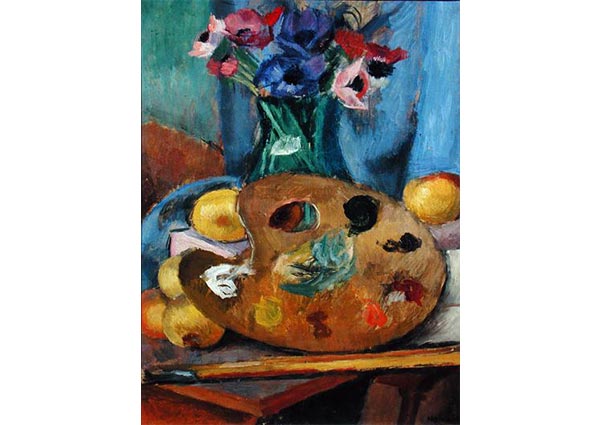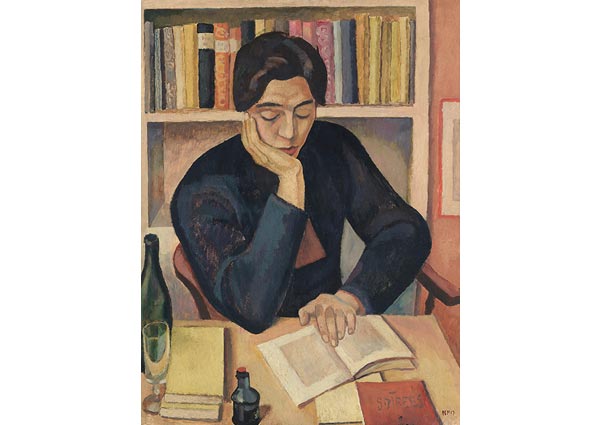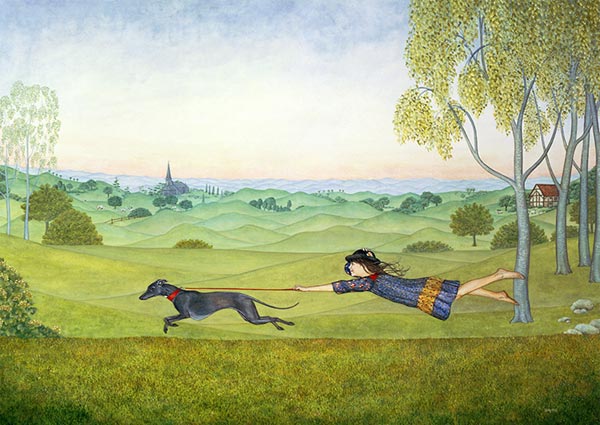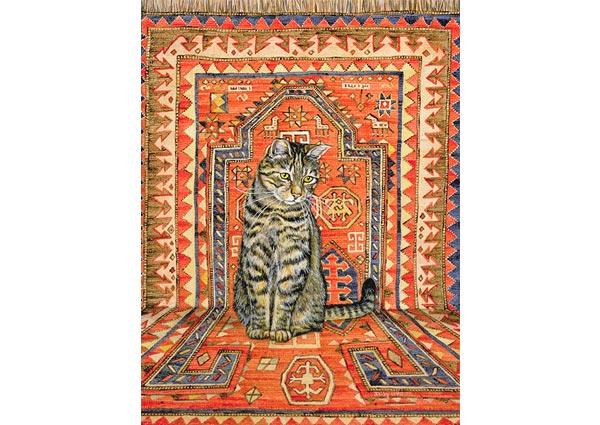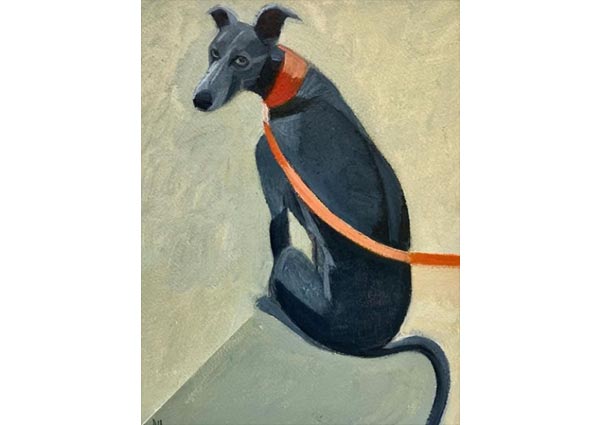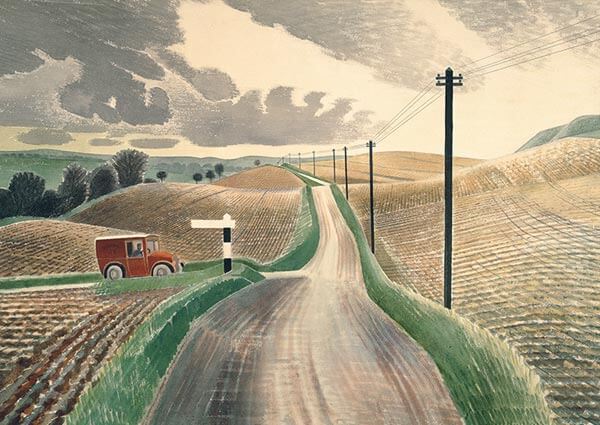Oxford Postcards
Orwell Press produce and supply a range of Greetings Cards featuring artwork of Oxford, as well as other parts of the UK by well known UK based artists.
New Greetings Cards
Featured Artists
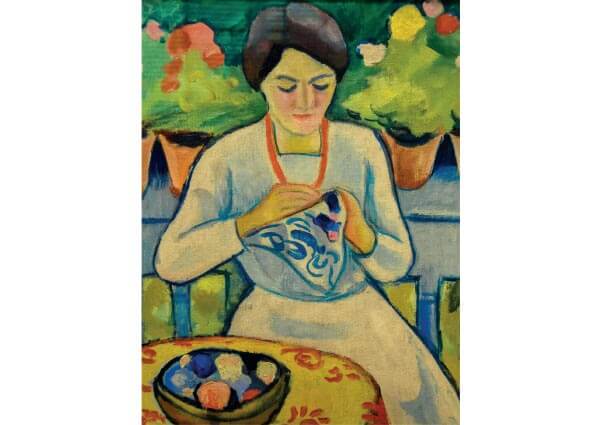
August Macke
August Macke was a German Expressionist painter and one of the leading members of the group Der Blaue Reiter (The Blue Rider). Macke studied at the Düsseldorf Academy from 1904 to 1906. During his first trip to Paris in 1907 he was profoundly influenced by the work of the Impressionist painters. In 1909 Macke again visted Paris and on this
trip discovered the work of Henri Matisse and the other Fauve artists. This convinced Macke to use brighter, less-naturalistic colours, applied in broad brushstrokes. In 1911 Macke joined Der Blaue Reiter, which had been founded by Franz Marc and Wassily Kandinsky. In 1912 Macke met the French painter Robert Delaunay, who worked in a colourful Cubistinfluenced style. Subsequently, Macke introduced a Cubist style into his own paintings.
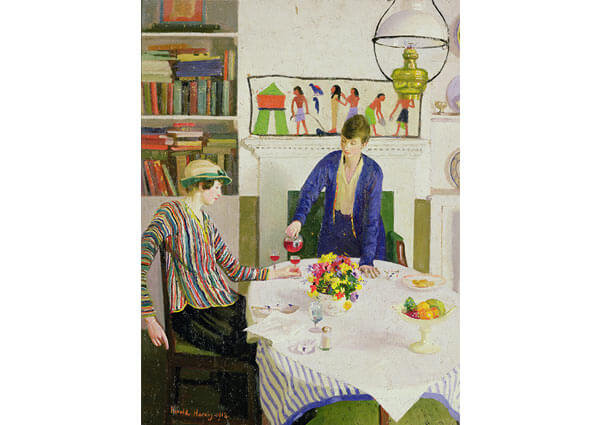
Harold Harvey
Harold Harvey was a Newlyn School painter who painted scenes of Cornish fishermen, farmers and miners and Cornish landscapes. He was born in Penzance and trained at the Penzance School of Arts and the Académie Julian in Paris. After completing his schooling in Paris, Harvey returned to Penzance and began working as an artist. In 1911, Harvey married fellow artist Gertrude Bodinnar and they settled in Newlyn. Gertrude became an artist in her own right in a wide range of visual and textile arts. Harvey never achieved his due critical acclaim. However, he was a regular exhibitor at the Royal Academy from 1898-1941 and held several one-man exhibitions in London, at the Mendoza Galleries, Barbizon House and the Leicester Galleries.
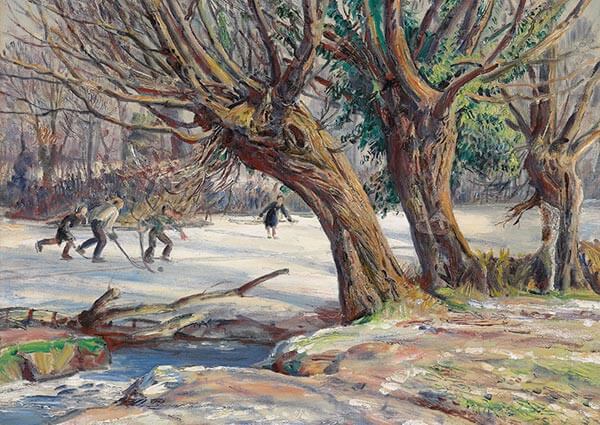
Laura Knight
Dame Laura knight was an English landscape and figurative painter. Laura studied at Nottingham School of Art in 1900, where she met Harold Knight. After marrying in 1903, they joined an artists' colony at Staithes, Yorkshire, before moving in 1908 to Newlyn, Cornwall. In 1936 she became only the second woman elected to full membership of the Royal Academy. Her large retrospective exhibition at the Royal Academy in 1965 was the first for a woman. In her long career, Knight was among the most successful and popular painters in Britain. Her success in the male-dominated British art establishment paved the way for greater status and recognition for women artists. She was also greatly interested in, and inspired by, marginalised communities and individuals, including Romani people and circus performers.
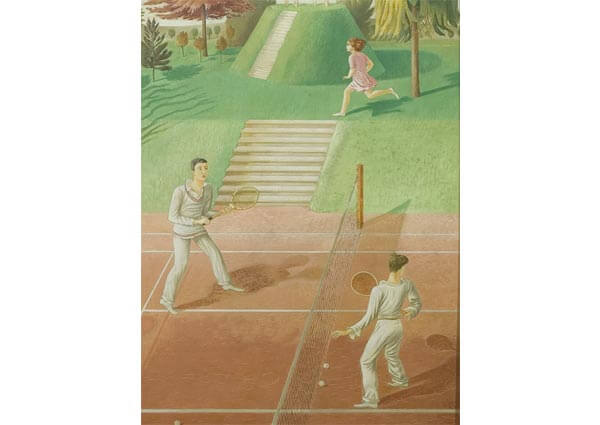
Eric Ravilious
Eric Ravilious was an artist, illustrator and designer specialising in watercolour paintings of the British countryside, most famously of Sussex. Ravilious had a special connection to the area, as he grew up there and studied at the Eastbourne School of Art. He went on to study at the Royal College of Art and later became one of the most popular artists of the 1930s.


